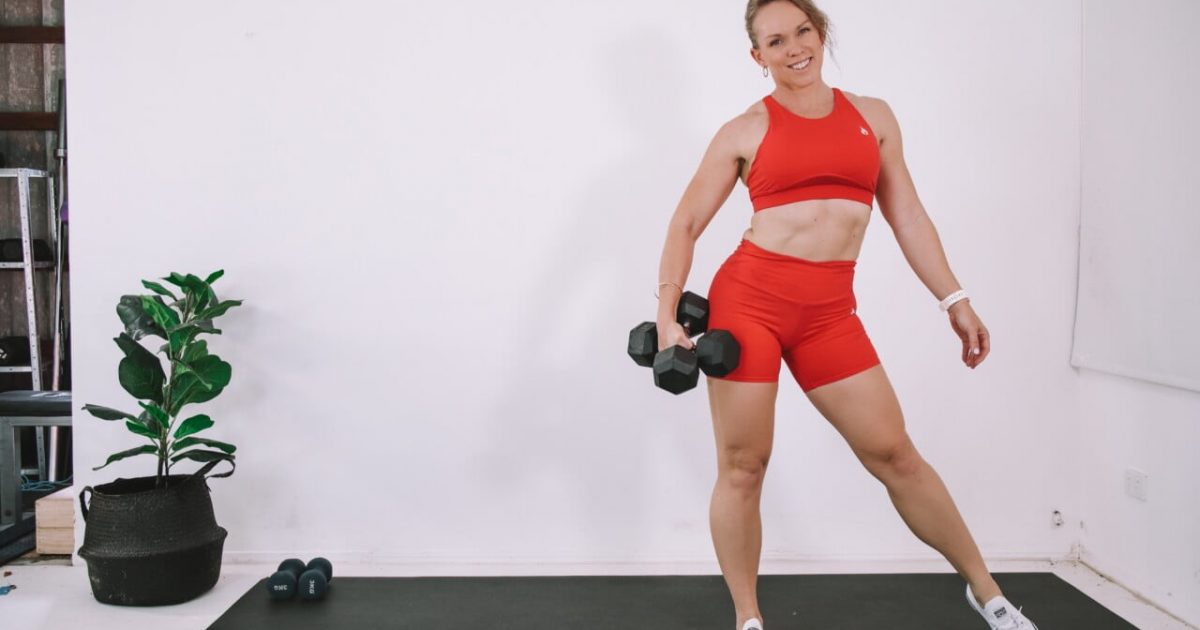It can be really difficult to know when to take a rest day from exercise and when you need to push through so that you get the results you’re wanting.
When it comes to working out, having no rest days will do more harm than good, as your body needs a day off to replenish and grow muscle. But too little exercise will not yield results… so where do we find the balance?
What is a rest day?
A rest day is a day off from strenuous exercise. Some people still do some really light, relaxing exercise on their rest days, such as walking the dog, which is absolutely fine.
The thing to remember is that rest days are just as important as exercise. Taking regular breaks allows your body time for recovery, it is essential for muscle growth, it prevents muscle fatigue and it reduces the chance of injury through overtraining.
Exercise creates small tears in your muscle tissue, and it’s not until we rest that these tears repair. The tissues heal and grow, resulting in stronger muscles.
It’s also worth noting that while regular exercise can improve your sleep, taking rest days is also helpful. Constant exercise can overproduce your energy-boosting hormones like cortisol and adrenaline, which will mean you’ll have a hard time getting quality sleep!
When to take a rest day
There are really no set rules for when you should take a rest day, as the answer will depend on your current fitness levels, how hard you’re working out, your goals and even your biology. The most important thing is to listen to your body, because everyone is a little different.
Here are some things to consider so you can figure out what’s best for your body:
You are excessively sore
It’s normal to feel a little sore after a workout, particularly after something quite intense like HIIT or strength training, or movements that your body isn’t used to.
Delayed Onset Muscle Soreness (DOMS) typically peaks around 48 hours after your workout, although sometimes it persists for longer. If your soreness continues for a week or more, or if you experience significant soreness (for example you can’t sit down without great effort), then it’s definitely worth considering adding more rest days to your routine.
Beginners may find that sweet spot to be around 3 days of exercise and 4 days rest in the beginning, but if they’ve been doing any sports or if they’ve just got the right genes, they may easily be able to switch that around and start with 4 days of exercise without feeling excessively sore.
Also, remember that when the soreness level in one part of your body is high but the rest of your body is fine — for example, if your arms are totally wrecked from an upper-body workout but your legs are OK — you could try a lower-body workout. This would definitely be my recommended advice for more advanced fitness levels, but for those whose bodies aren’t as used to exercise it may be better to take the day off.
Remember that some soreness is perfectly normal and it means you’re making progress. But be honest with where you’re at and don’t push yourself too hard.
Even people who are extremely fit and rarely feel sore should take at least one day off a week. Instead of skipping the rest day, their focus should be on increasing their weights or increasing the intensity of their exercise in order to keep seeing improvements and avoid a plateau.
You dread the thought of exercise
Working out challenges both the body and the brain, so if your mind is begging you for a break, it’s definitely wise to pay attention.
If you’re not a huge fan of exercise and your brain always feels that sense of dread, that’s another matter entirely! You might need to consider whether you need to change the type of workouts you’re doing so that they’re more enjoyable, or you might need to set yourself smaller goals (for example “I don’t need to do the entire workout, I am just asking myself to do 20 minutes of it”).
If you’re typically someone who gets excited to workout and you find that drive has disappeared, it’s probably a sign that your body has had enough and needs a break, even if your perfectly laid-out schedule doesn’t agree! A couple of days off may be just what you need to reignite your spark, and sometimes you’ll find that it was exactly what you needed to come back re-energised and stronger.
You’re experiencing muscle cramps
If you start experiencing muscle cramps while doing relatively gentle activities, such as your calf seizes up when you go for a walk, or while sleeping (don’t you hate that?), then it may be a sign that your body is dehydrated and/or excessively fatigued. Take a day or two off from exercising and drink plenty of water! Also, consider checking with your doctor or health professional to see if you need to supplement magnesium.
You’re injured or unwell
Please make sure you take time to rest if you’re unwell or injured. Your body really does need the time to rest!
Once you have recovered, ease back into exercise and pay attention to how you feel, just in case you’re still not 100%. No point forging ahead and making yourself feel worse, your body needs to recover.
You’re struggling with exercises you’d normally crush
This is a really big indicator! You know your own fitness level, and the best comparison is yourself. If you usually have no trouble doing certain exercises — let’s say a dozen burpees was pretty normal for you and only left you feeling slightly puffed, then all of a sudden you have difficultly pushing yourself up off the ground for your second burpee — it’s definitely time to consider a break!
While it’s great to push ourselves, it should be a slight push from the place we were before. Our momentum should be moving forwards — we should be doing more reps, increasing intensity or lifting heavier. If your ‘push’ relates to activities that were recently fairly normal to your body, it’s time to have a rest day or two.
Your resting heart rate has risen
Your resting heart rate may slowly decrease as a result of regular training as your fitness improves, but an increased resting heart rate may be a sign your body is stressed. If you track your resting heart rate on your smart watch (or other device) and notice that it has increased, it may be time for a rest day. If it doesn’t drop with rest, definitely check in with your doctor.
You’re dehydrated
I’m sure you know the signs of dehydration: extreme thirst, lethargy and dark coloured pee are the main indicators.
If you’re dehydrated, it’s definitely not the time to do a workout since sweating will only worsen the issue. Take a day to get your fluid levels back to normal (and remember to drink more water every day in future — aim for 2 to 3 litres).
When to work out again
How can you determine how much rest is enough? Sometimes, all you need is just one rest day. Other times, you may need a couple of days off — or more if you’re injured. The answer really comes down to listening to your body and brain above all else.
Say aware of the warning signs I’ve mentioned above such as an increased heart rate, dehydration, injury, cramps or being unable to do exercises that were previously quite easy. If you feel as though your body is absolutely fine, and your DOMS is within normal levels, then it may be time to pick up those dumbbells again!
If your motivation is low but you feel as though your body doesn’t need a rest day, consider trying a completely different workout style to mix things up or exercise with a friend. If the thought of either of these changes make you feel a little more inclined to workout, there’s a good chance you’re ready to go!
The bottom line
Whether you’re a beginner or a seasoned athlete, rest days are crucial! They are important for muscle repair and growth, preventing fatigue and injury, and overall performance.
If you still like to move on your rest days, do relaxing low-impact activities like yoga and walking (or just veg out on the lounge and watch Netflix, knowing that your muscles are growing!)
Remember, without enough breaks, you’re less likely to achieve the goals you made in the first place. Letting your body rest is the best thing you can do for fitness success. It may take a little bit of time and getting to know your body, but the best person to know how many rest days are right for you, is you.
***
Enjoy your training! Make sure you follow me on YouTube so you never miss one of my follow-along workouts. You can also sign up to my newsletter to say up-to-date and receive free monthly workout calendars.



